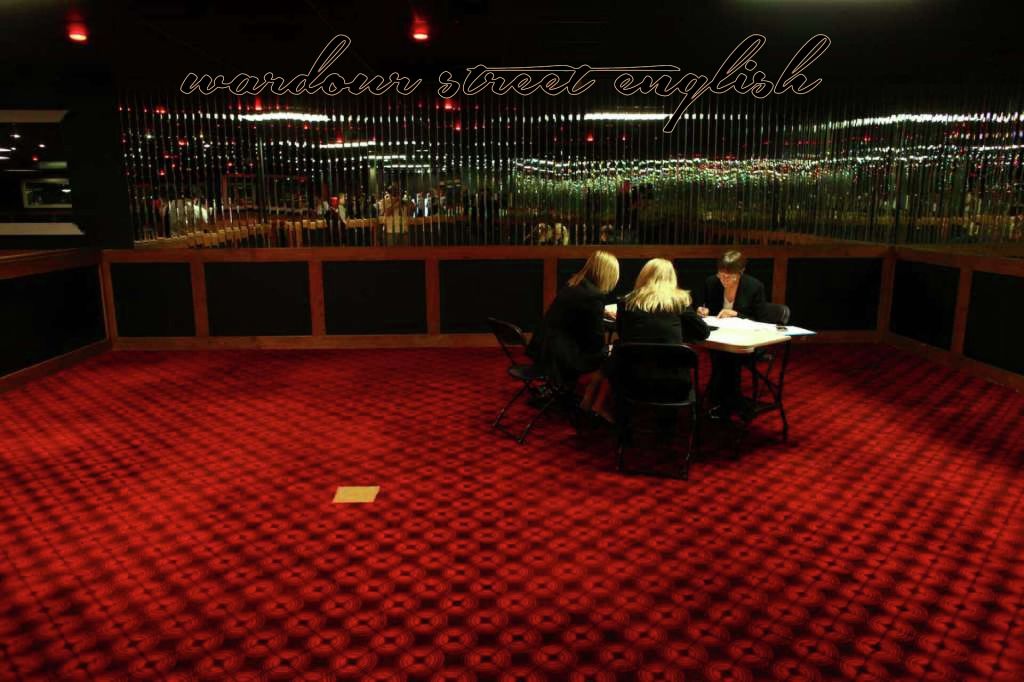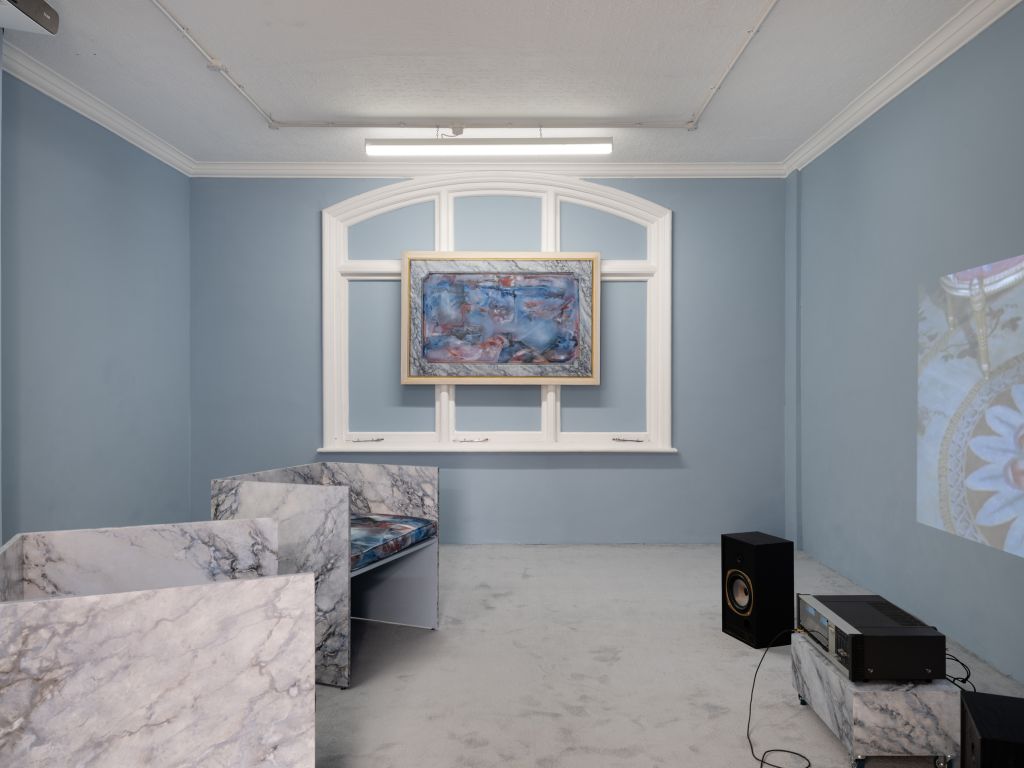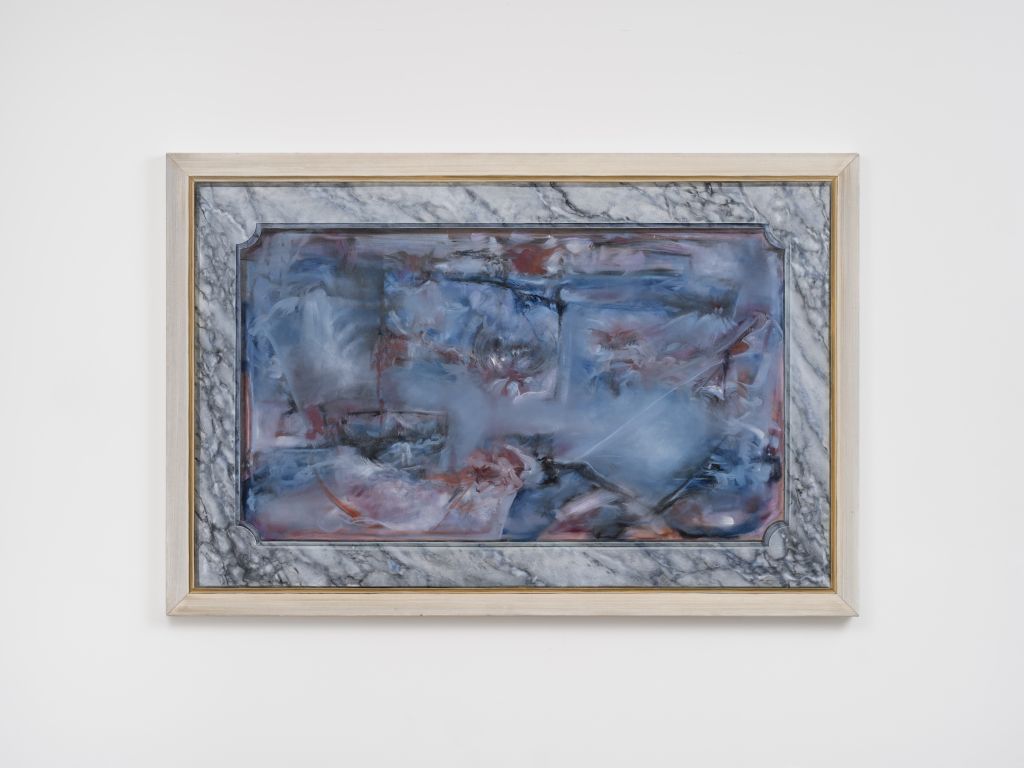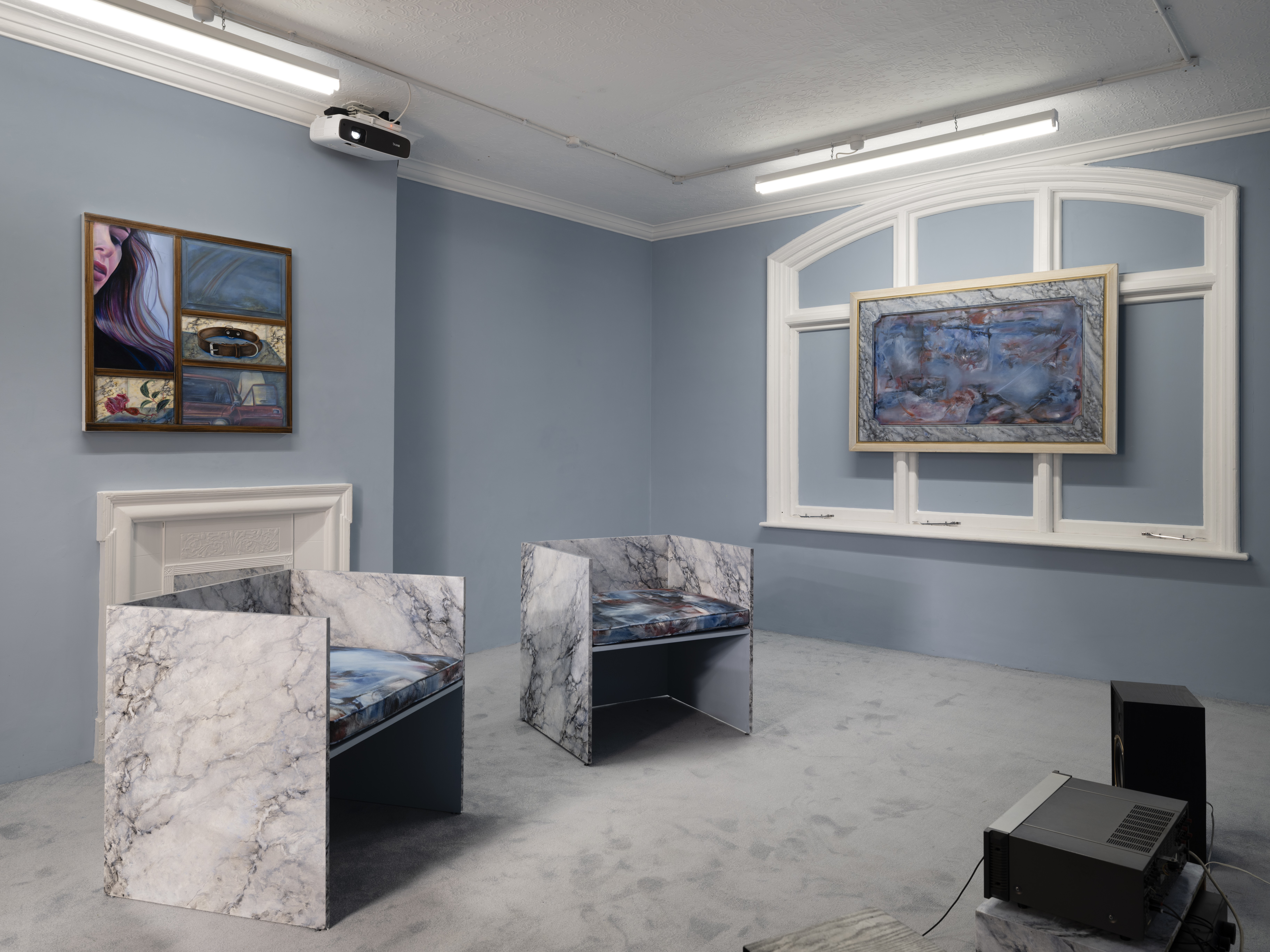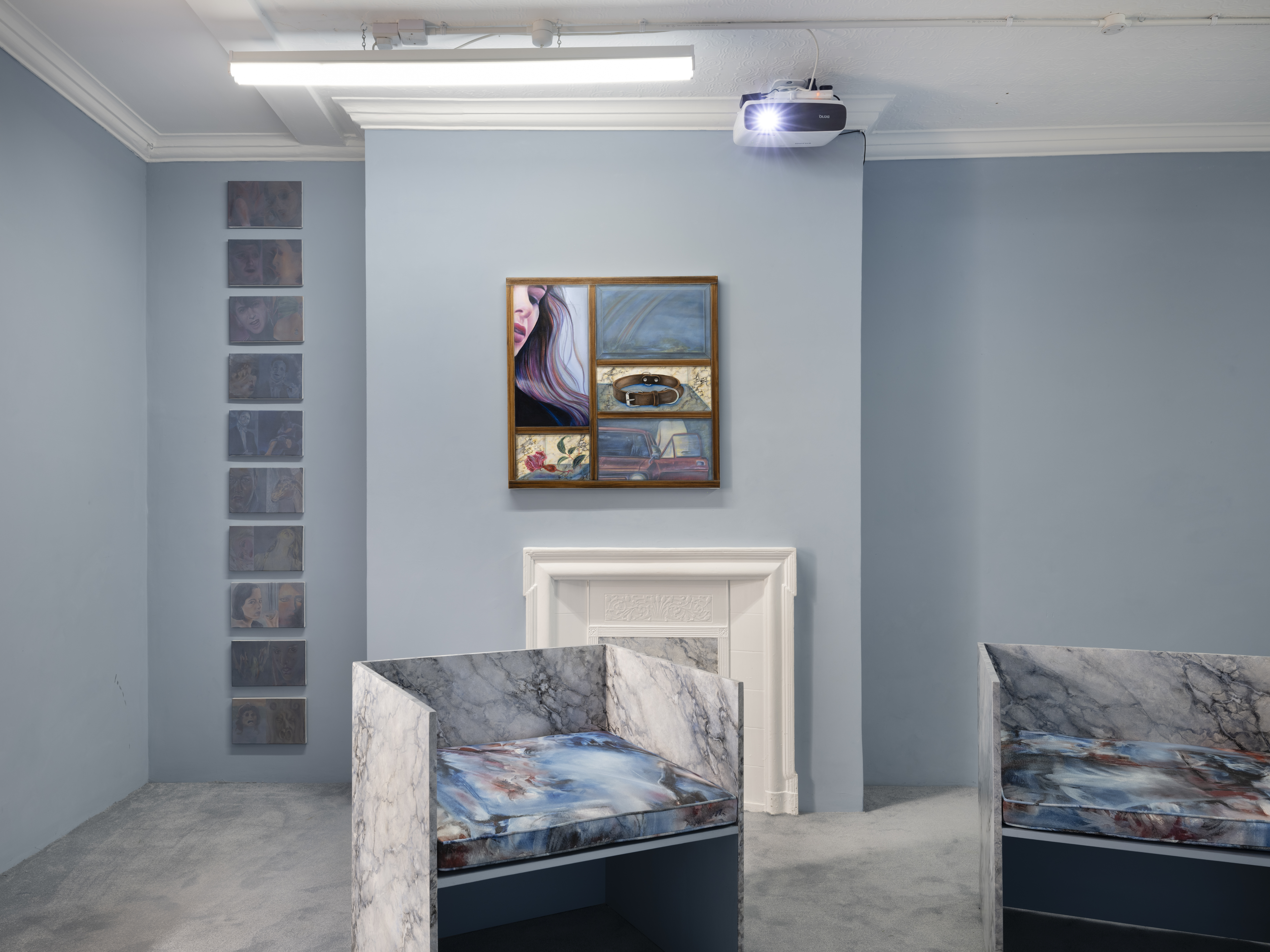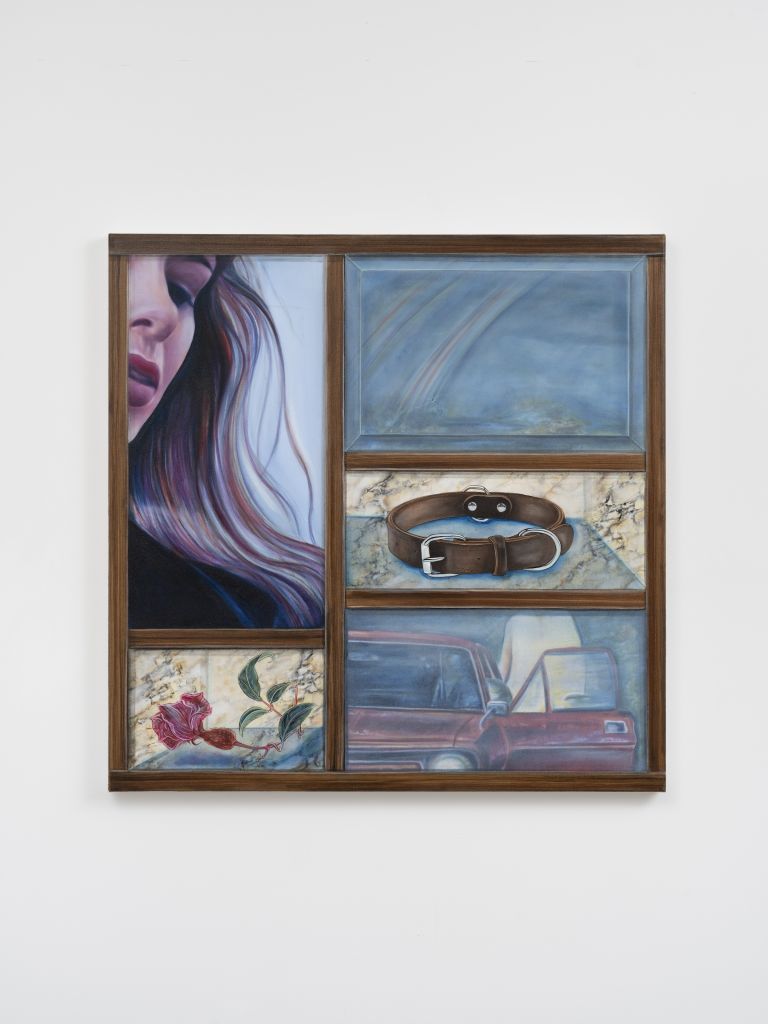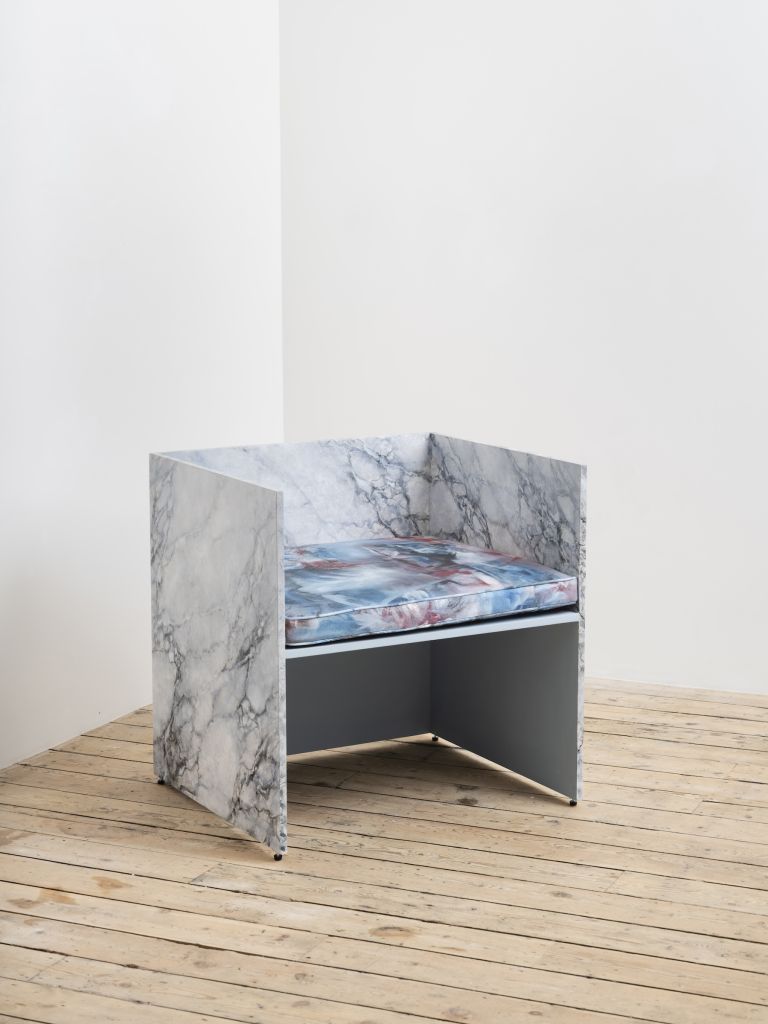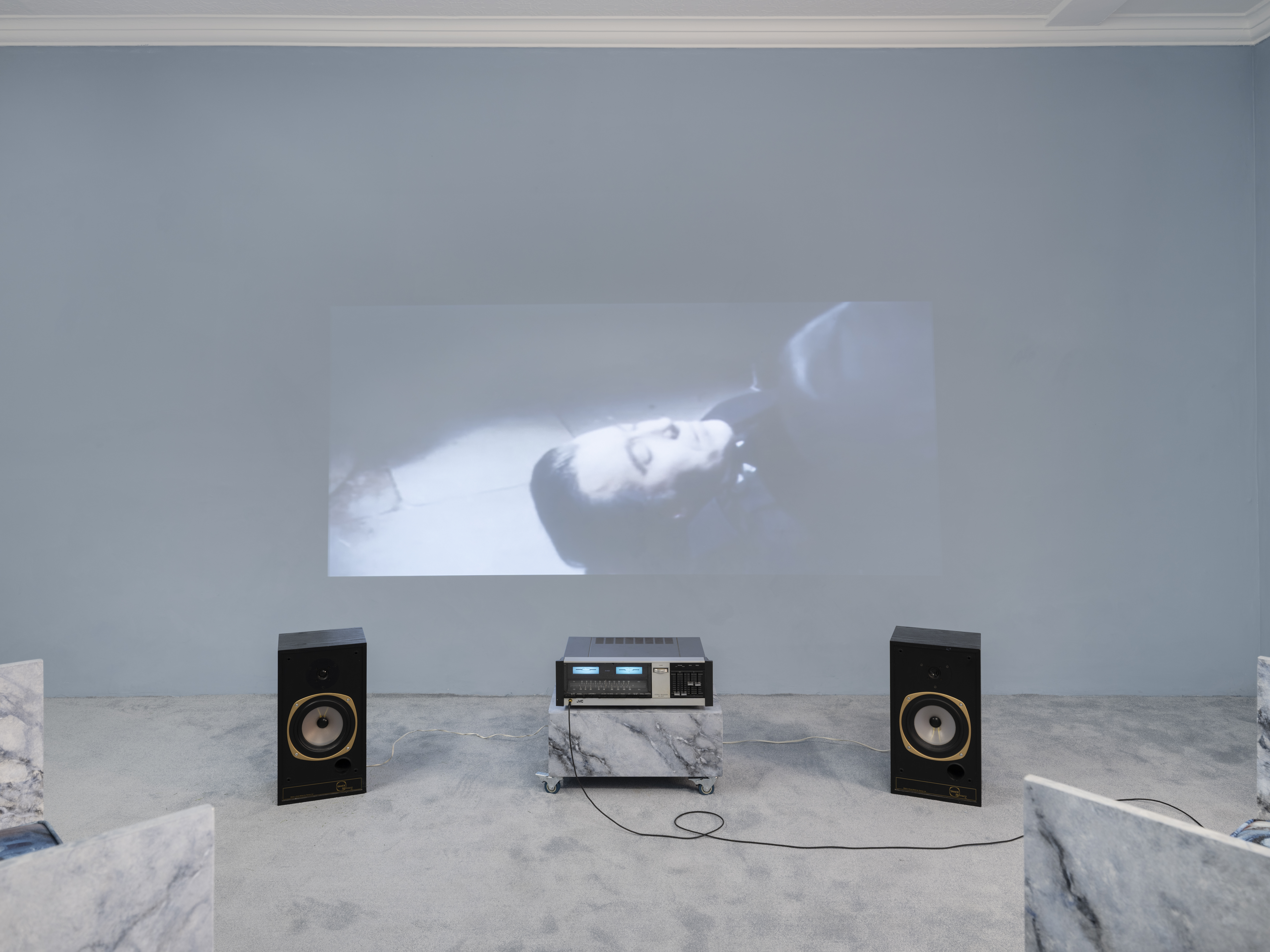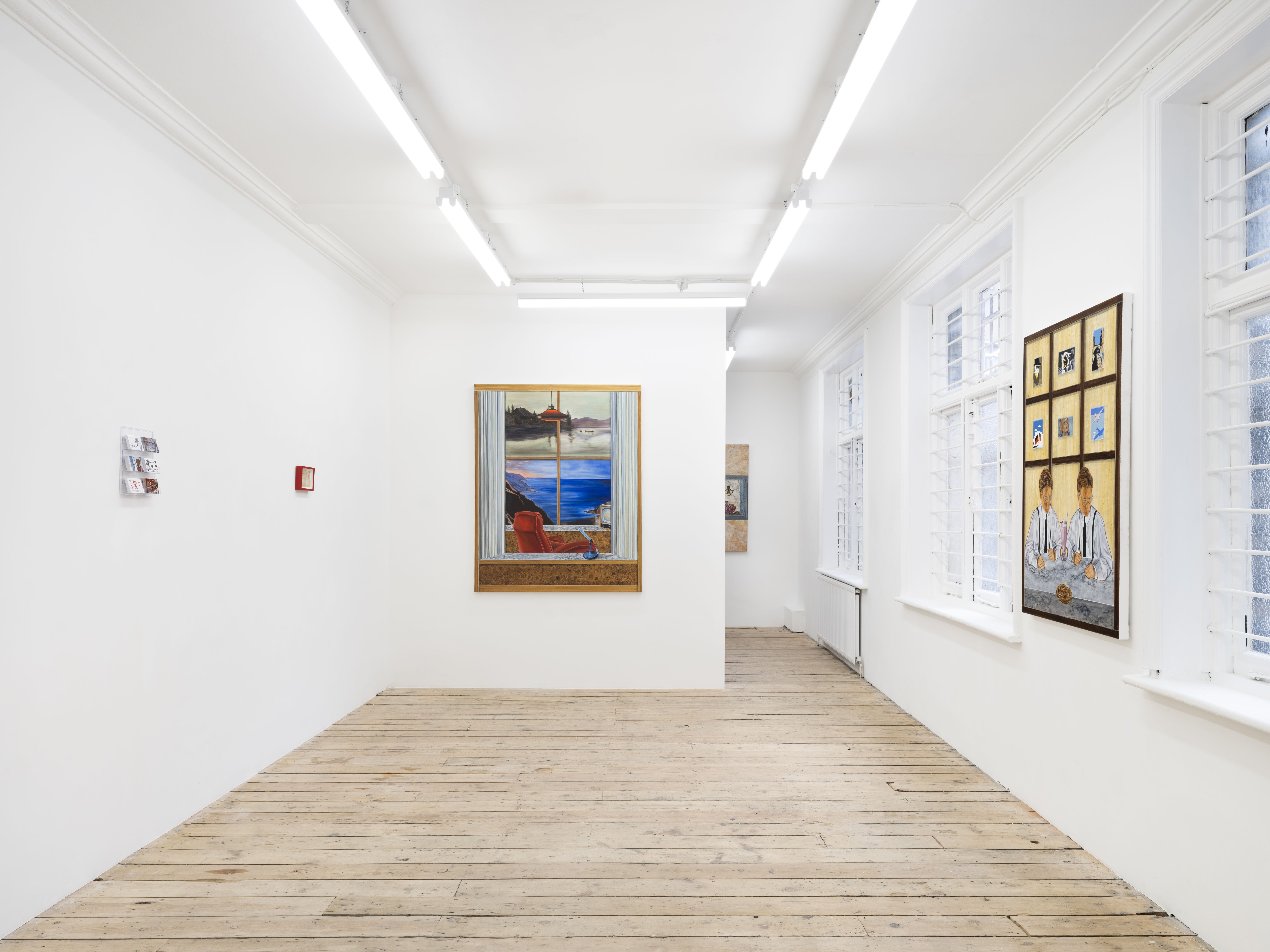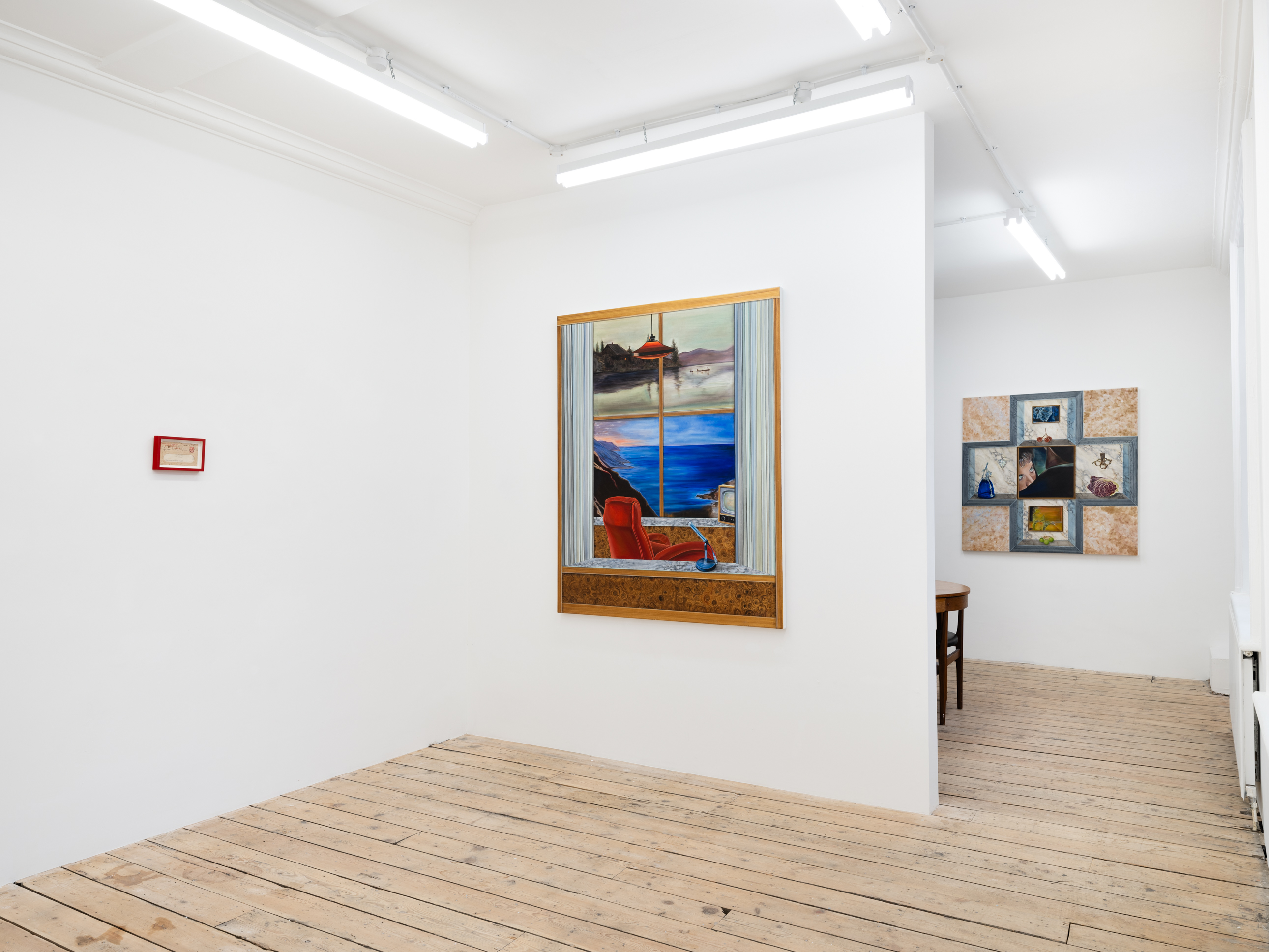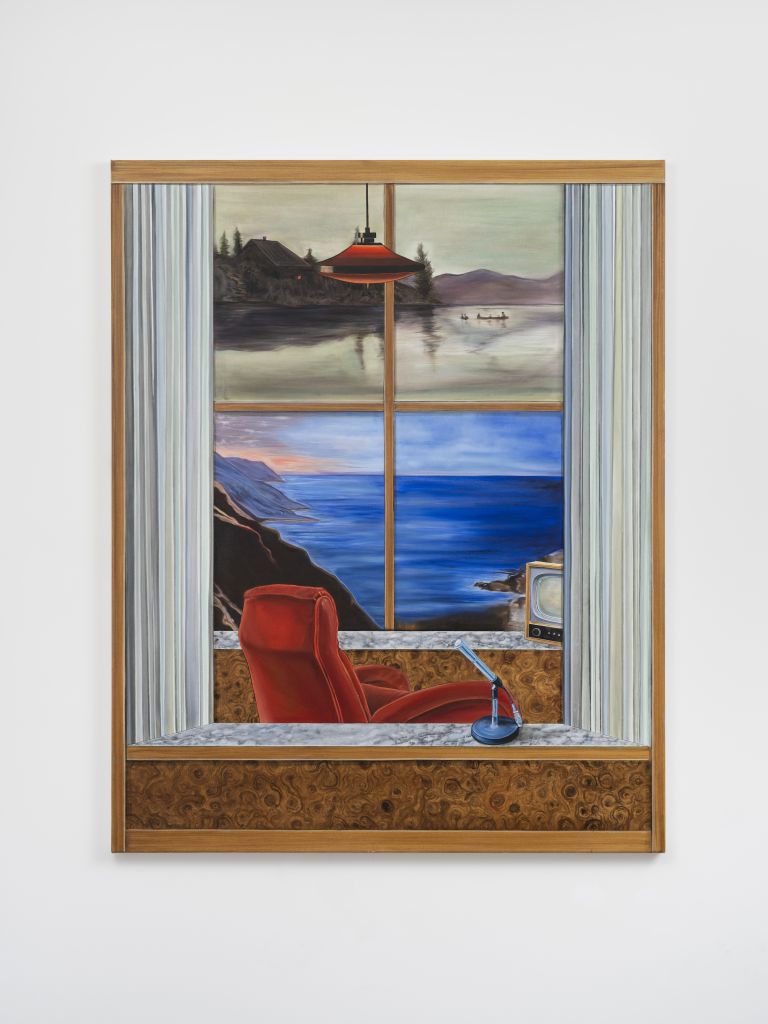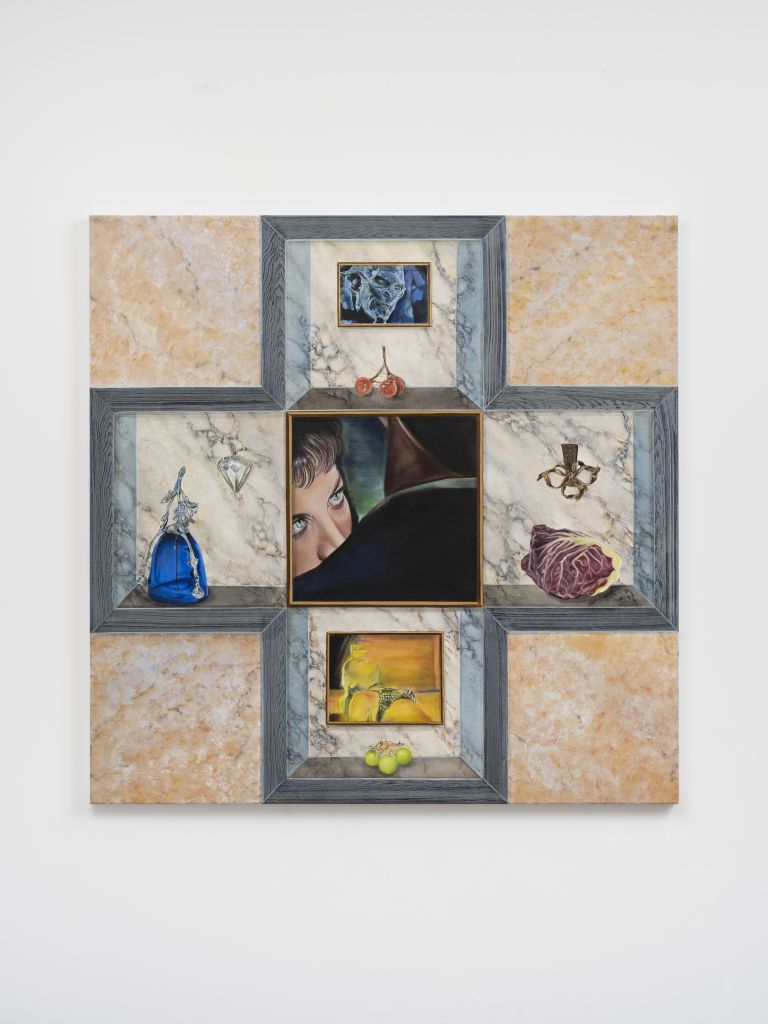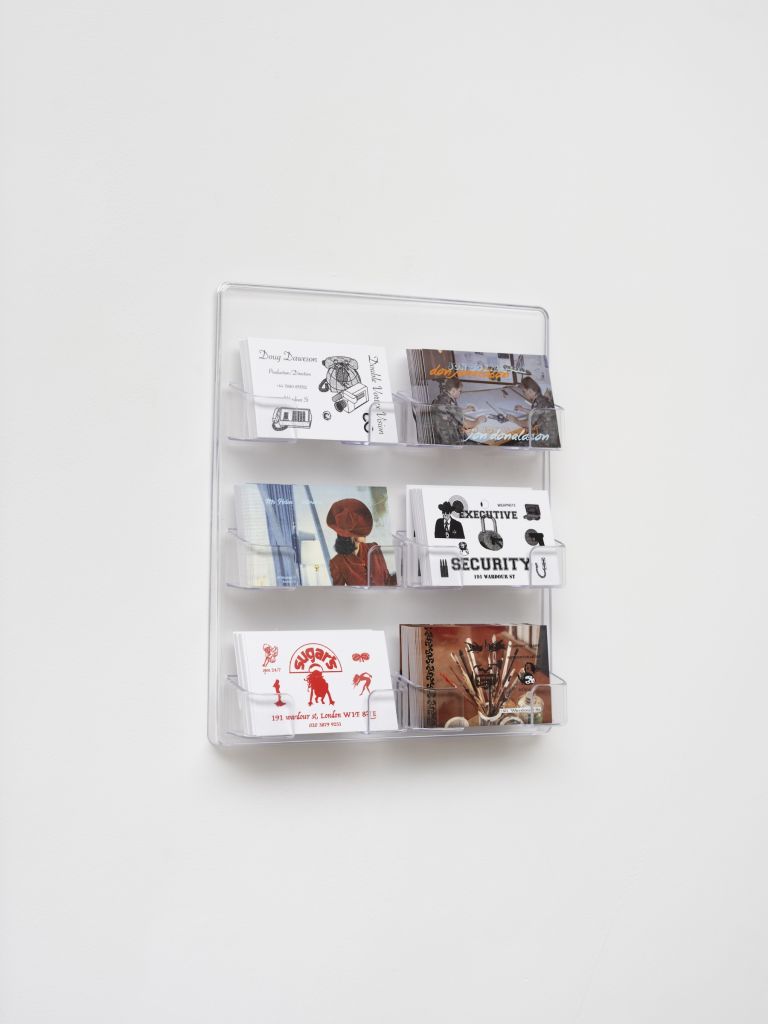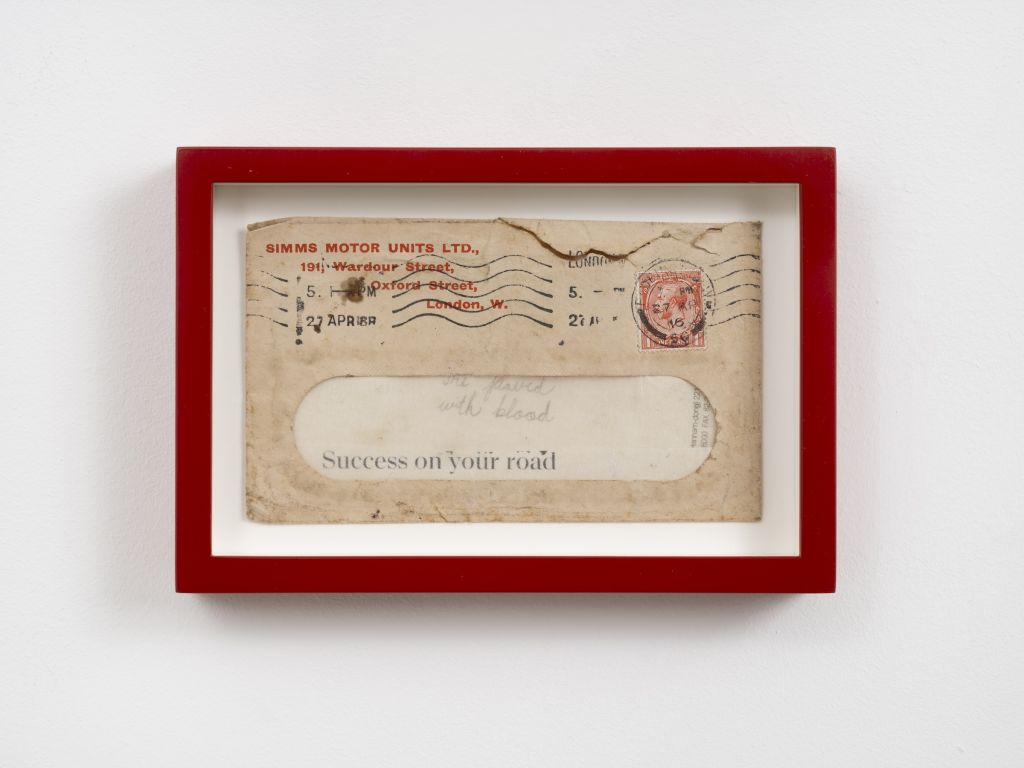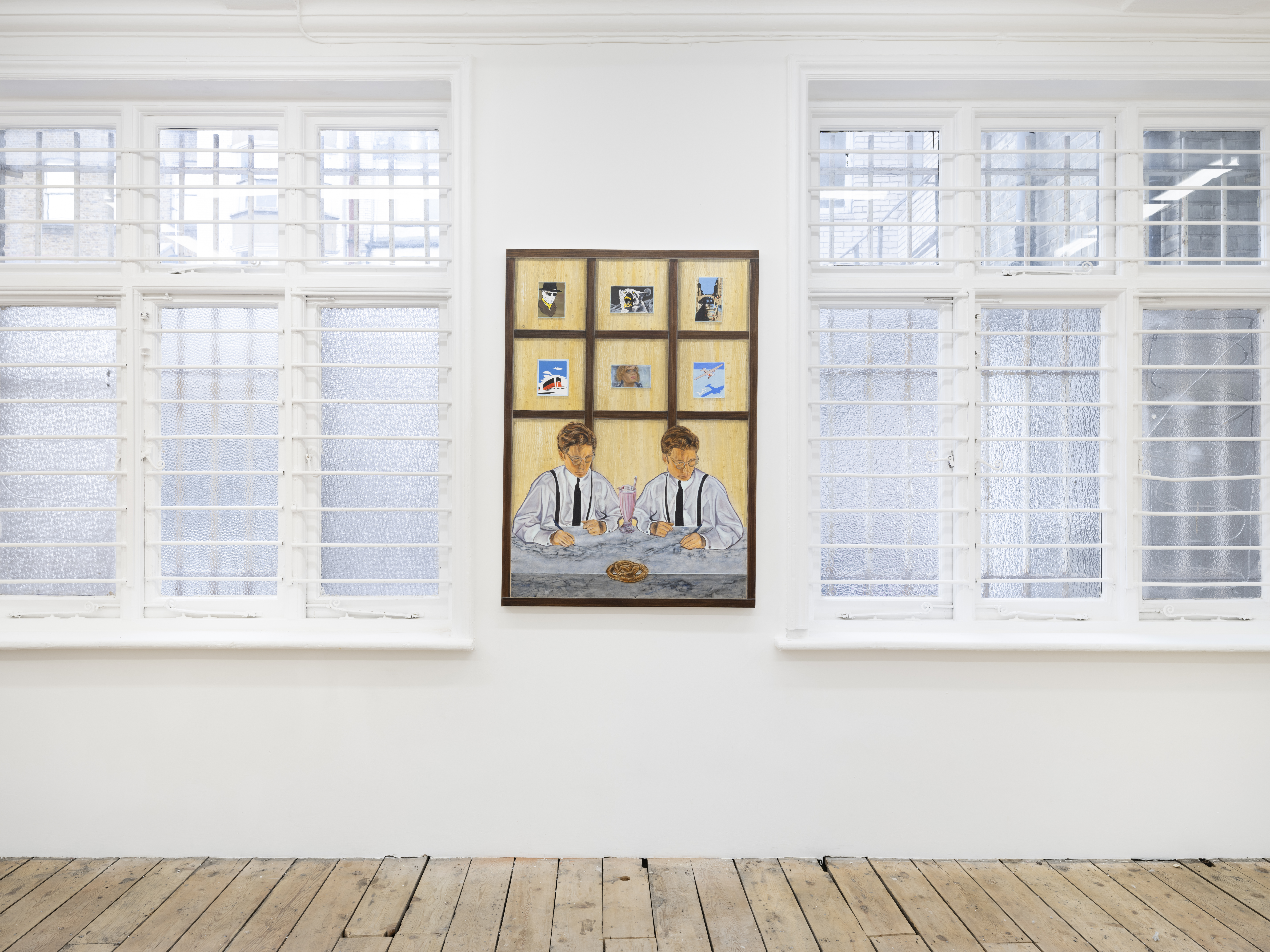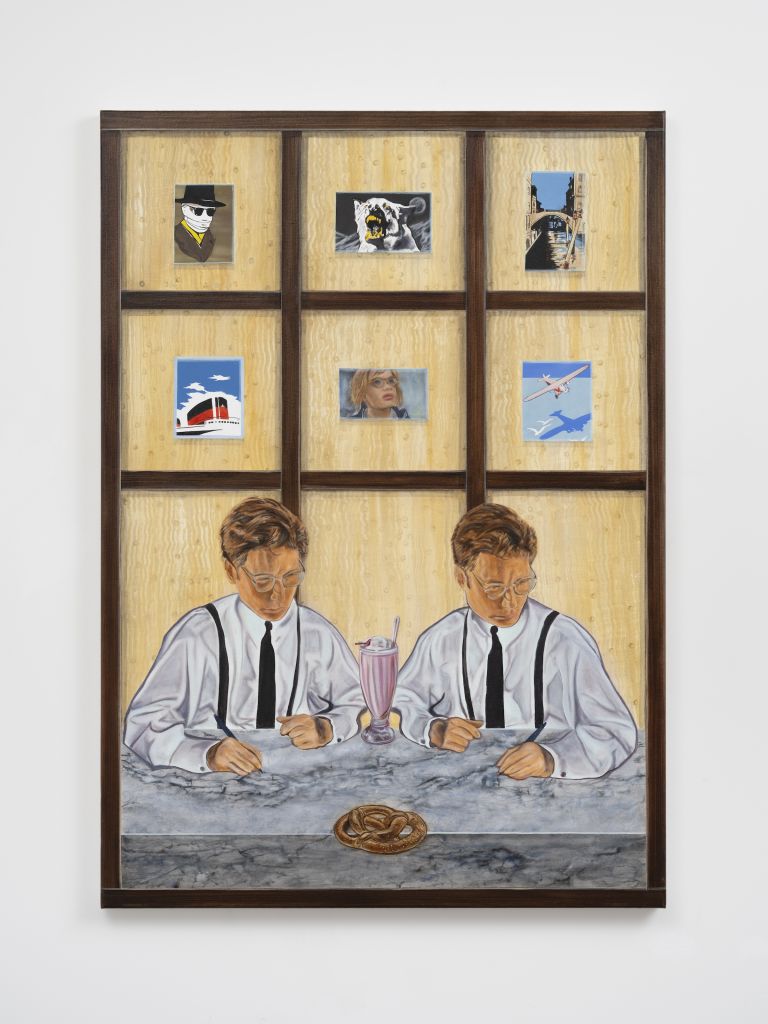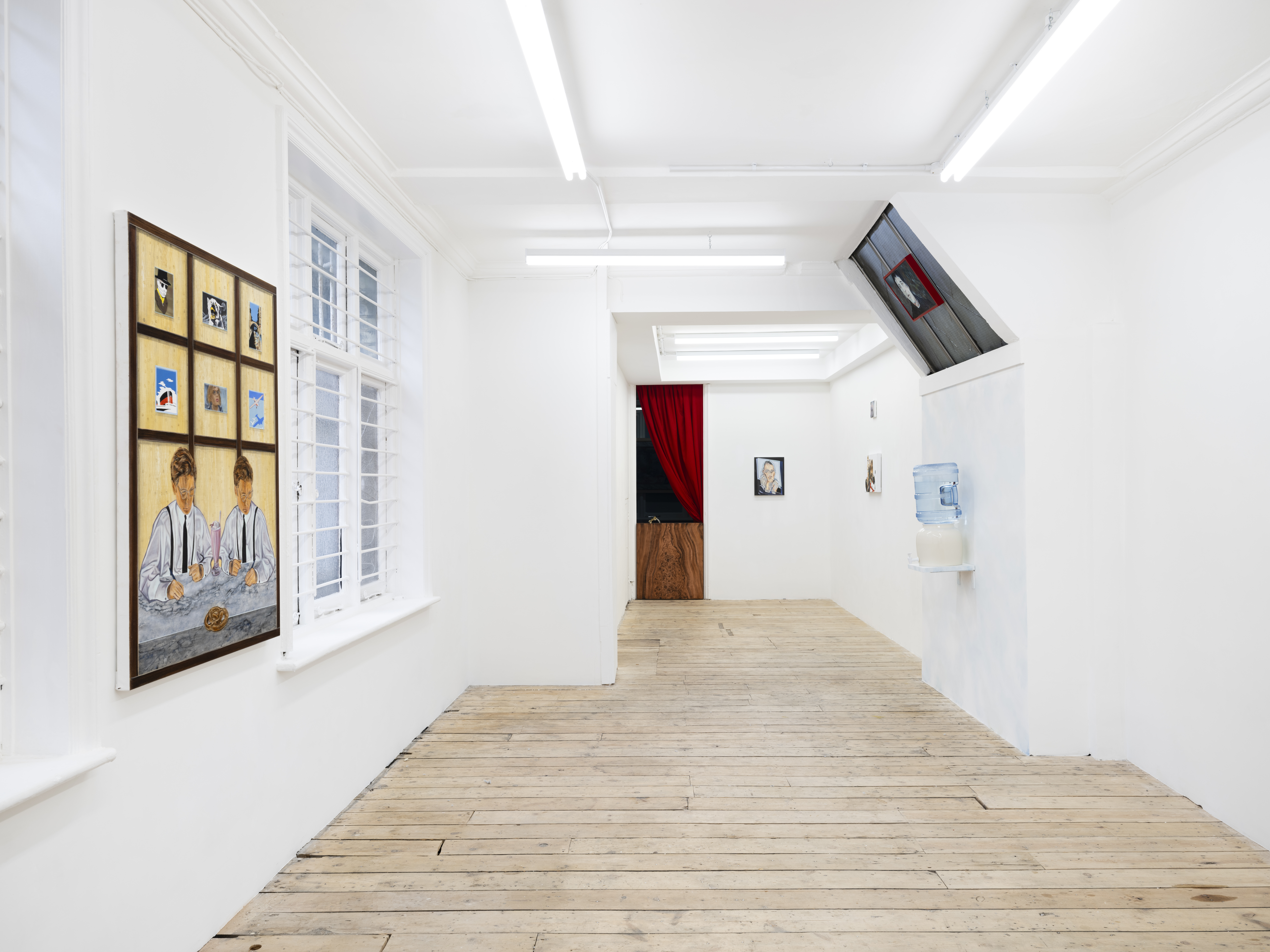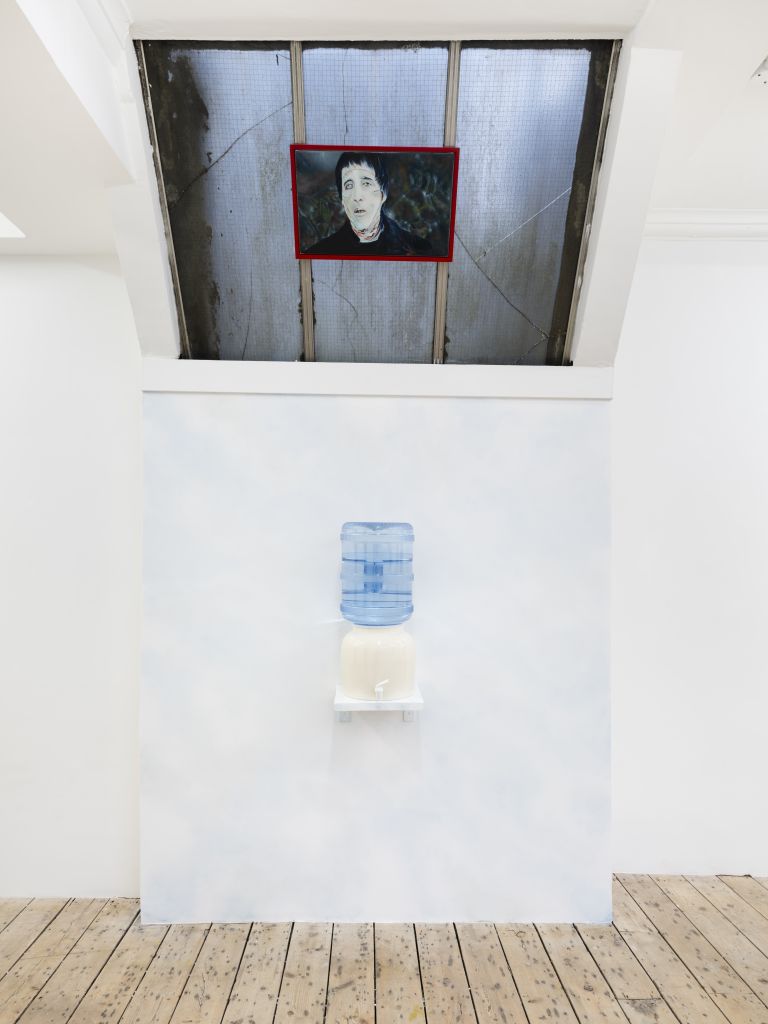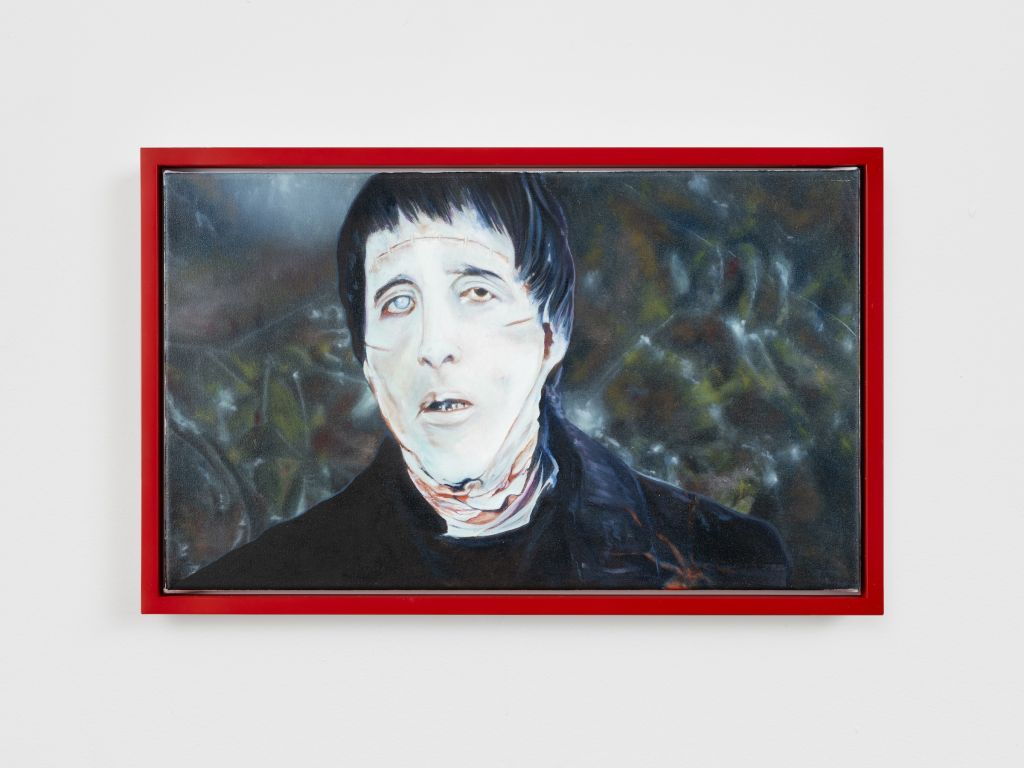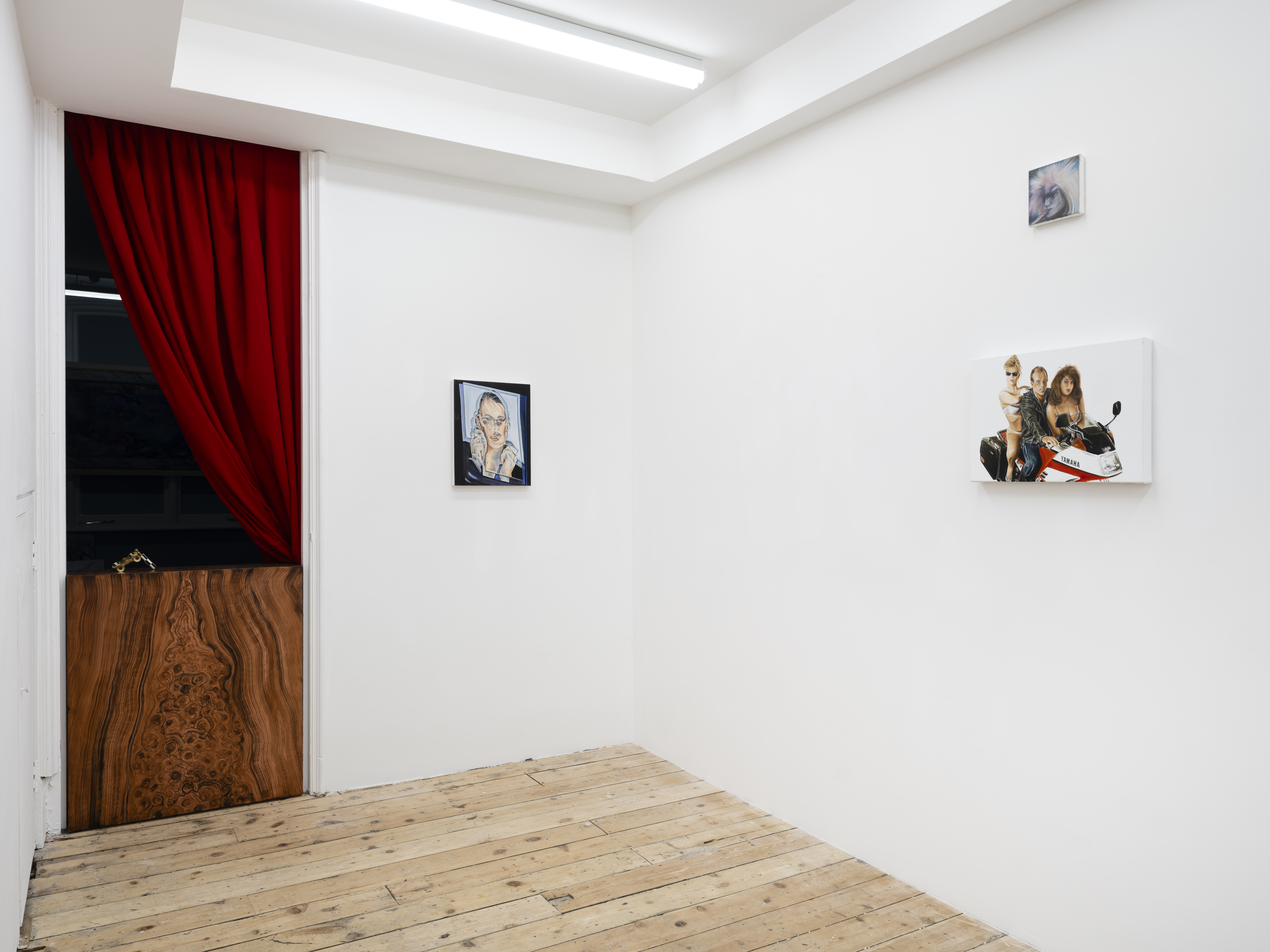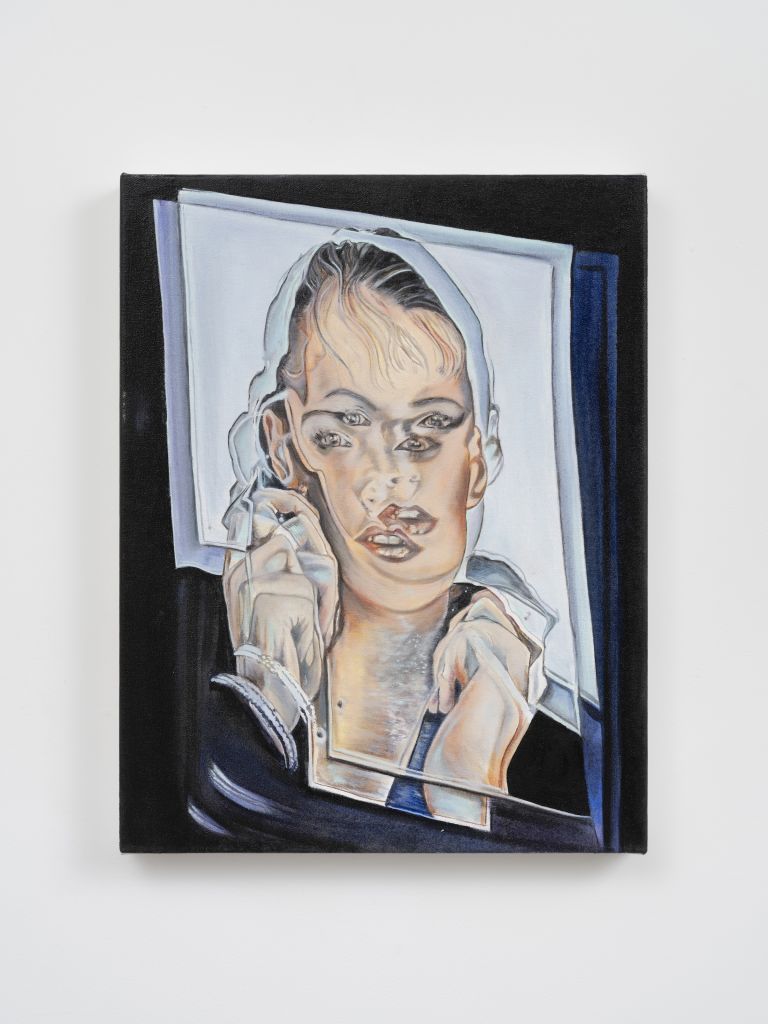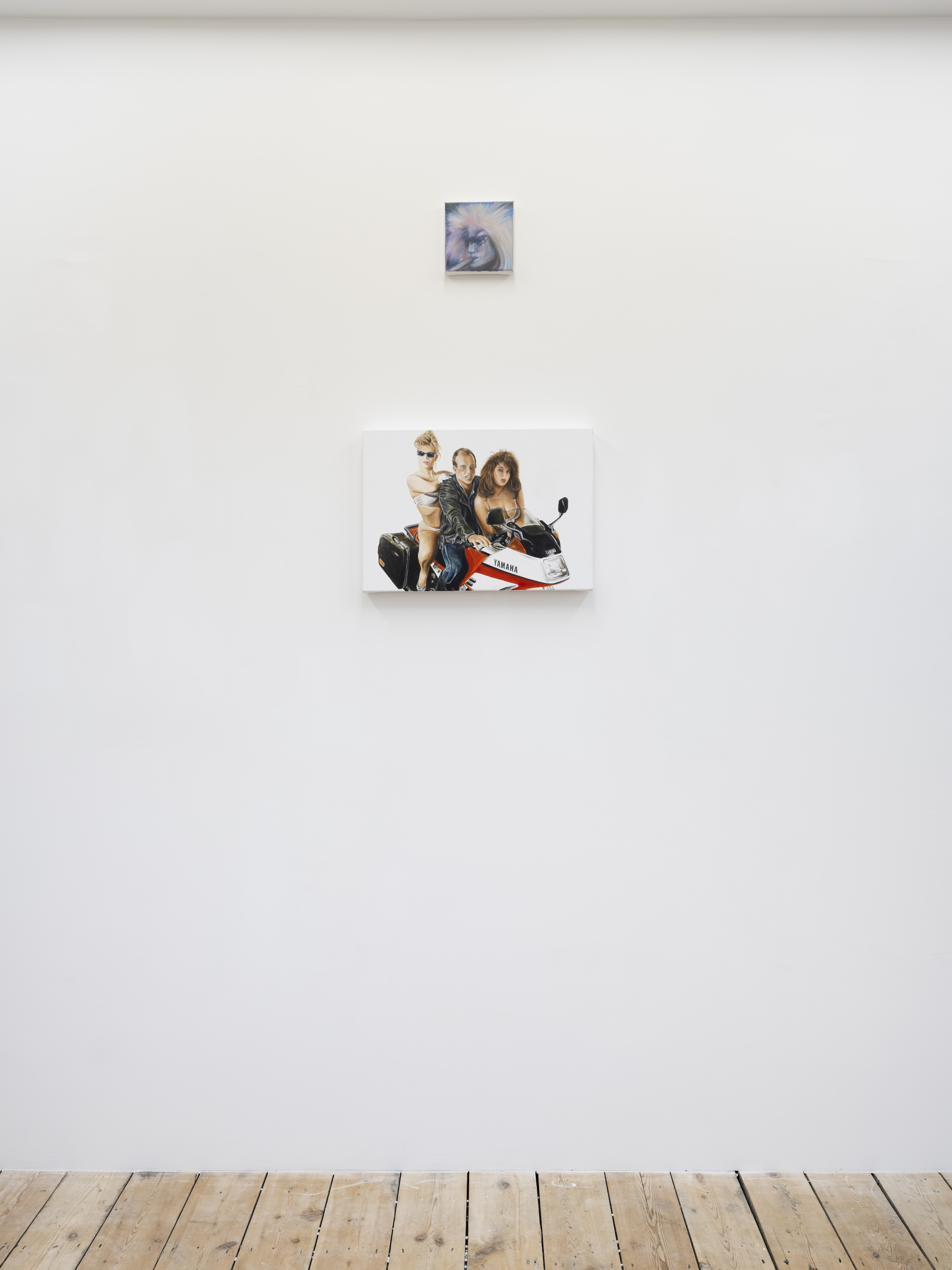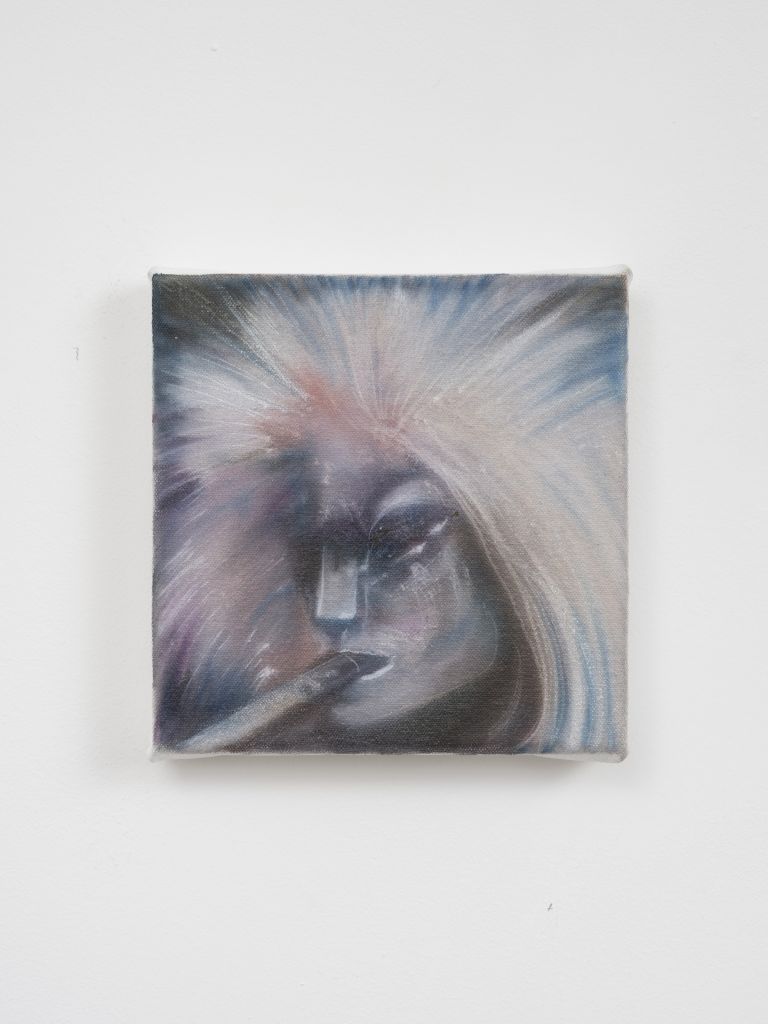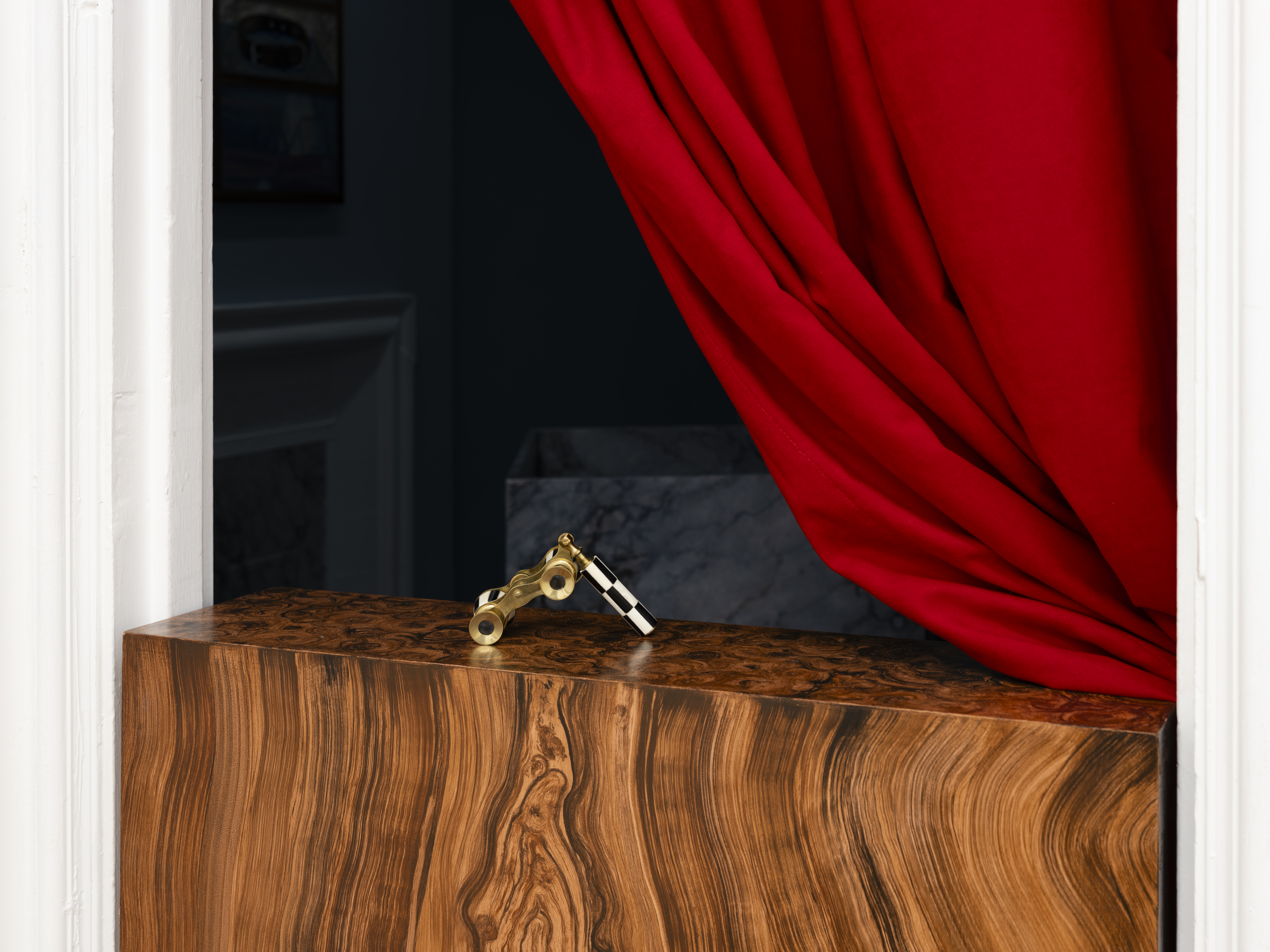Wardour Street English takes its name and starting point from the street on which it unfolds. Known historically for its furniture trade, film production houses, and music and club venues, Wardour Street offers a strange synchronicity with long-standing interests in Scott Young’s practice where we see a critical interest in furniture, anachronistic media, and subcultural histories.
For Young, the term 'Wardour Street English'— used in the 19th Century to describe the artificial aging of furniture to appear antique—becomes a fitting metaphor for making art today. How does meaning adhere to things? How does style construct time? These questions echo throughout the show, from a fascination with still life painting to the legacy of Richard Artschwager and exhibitions like Objects for the Ideal Home (1991) and Cubism and the Trompe L’Oeil Tradition (2020). Furniture here is not just furniture—it becomes a vehicle for organizing meaning. As Lynn Spigel writes, domestic objects and media technologies shape one another. Her thinking, especially in TV By Design (2008), invites us to consider how material culture and image-making are entangled in everyday life.
Wardour Street’s deep ties to media—specifically British Pathé and Hammer Horror, two organisations at opposite ends of the spectrum, one being a Video Magazine of Global news and one being completely fantastical cinema. – offers a reality vs. fantasy dichotomy that feels relevant in today’s media clima...
